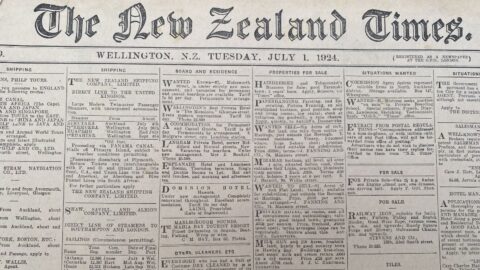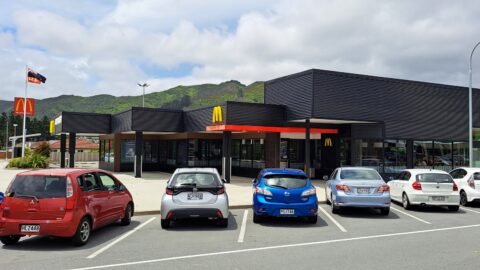Advantages for a large fully fenced ecosanctuary in Wainuiomata
Wainuiomata has always had a special function within the Wellington Region. Forestry opened up the valley for business in the mid eighteenth century and the harvested wood was used for building homes in Wellington. Later, deforested areas were then converted into farmland that attracted more people to the valley. As forestry dwindled, water management came next as Wainuiomata became the main supplier to Wellington for drinking water. Today, the water supply for Wellington from Wainuiomata is down below 20% of the region’s supply. While not as important for water supply as it once was, the spin off is a pristine water catchment area that has never been logged and consequently, has some of the best examples of old native tree species to be found in any podocarp rainforest in the southern North Island. This gives rise to a potential new endeavour for Wainuiomata, as the suburb could be home to the world’s largest fully fenced ecosanctuary if a current proposal gets go-ahead with funding. What is being proposed is a huge de-extinction zone, protecting many rare animals, plants, and trees. It is hoped that such a zone would not only protect what’s inside the fence, but also have spillover effects in the surrounding areas. If successful, this initiative could serve as a model for similar projects nationwide, offering a solution to bolstering endangered animal populations around the country. Sounds great doesn’t it? After all, wildlife sanctuaries attract significant attention due to their role in safeguarding rare species from the threats posed by introduced species, which often outcompete native wildlife in their natural habitats. New Zealand in particular, has felt the impact of this problem, particularly since a large portion of our native fauna consists of birds instead of mammals, with around one-third of these bird species being flightless, making them especially vulnerable.
When one thinks of wildlife sanctuaries today, it is Zealandia that comes to mind. It is not just an example of a safe haven for birds and other animals that live in relative safety within the confines a predator proof fence, but is also a source of revenue, jobs, and education. While this contribution falls short of covering all expenses, it represents a significant step in that direction, prompting many to view it as a worthwhile investment. After all, conservation efforts invariably entail costs, no matter the approach, and any progress made toward self-sustaining conservation is valuable. So, could Wainuiomata and New Zealand benefit from a similar setup? Many say, yes. Others however, see numerous problems with a large eco-sanctuary in Wainuiomata.
Challenges associated with a large fully fenced ecosanctuary
- Unlike Zealandia which attracts tourists, Puketahā would exist as a de-extinction zone (with some limited organised tours), so is unlikely to generate much income from gate sales and tours. Consequently, with its focus on conservation only, there may not be many tourists or locals from the Wellington Region pumping money into local businesses for their goods and services.
- Construction of a sanctuary could have significant negative effects on water quality in the water catchment basin.
- A sanctuary could rule out any future expansion of Wainuiomata water supply for Wellington.
- The project has an estimated cost of 40 million, typically kept minimal for initial approval, but likely to escalate during final planning and implementation.
- The fence track clearance specification ranges from 30m to 60m to accommodate varying tree heights along the route, necessitating extensive bush clearance, particularly in areas like the top of the range and Solomons ridge.
- Selective tree cutting is planned to prevent damage to the fence while minimizing track width, although some sections will require wider clearance due to the abundance of trees.
- The extensive forest removal, including some large trees, will have a visually negative impact, especially the more in view ridge areas, which are prone to extreme wind conditions.
- Monitoring and maintenance costs are expected to be high and ongoing, with additional expenses likely for forest regeneration and addressing windfall damage along the cleared track. Puketaha will be at least 15 times larger than Zealandia meaning much more ongoing resources will be needed.
- The absence of comprehensive damage reports and the lack of precedent for constructing a predator fence on such a large scale in a canopied main range raise doubts about the project’s feasibility.
- Comparisons to successful initiatives like the nearby kiwi reserve, which thrives without a fence, suggest cheaper alternative approaches to conservation.
- Public discourse often overlooks critical details, emphasizing the benefits of the fence while neglecting potential drawbacks and alternative strategies.
- Political influences, particularly from the Green Party, may be driving the push for projects like the predator fence, with a focus on expenditure rather than a sustainable solution.
The proposed fence initiative seeks to address various factors, some of which overlap with existing strategies which are already working. Possums and stoats for example are identified as the primary targets due to their significant impact on tree and bird populations. But current methods such as 1080 drops and trapping are used successfully for pest control. However, additional species like deer, pigs, and goats are challenging. Despite recent observations of minor issues like pig rooting, the catchment area has generally fared well without major threats, with occasional deer population increases addressed through monitoring and culling efforts.
So, the question remains, is a wildlife sanctuary in the Wainuiomata Water Catchment Area a case of spending millions of dollars on fixing something that is not broken?
The Fence Line
Here is the outline of the fence line, unveiled in 2023. The route traverses three ridges. Everything to the right of the red line falls within the Orongorongo catchment, with only a few remaining pockets of forest, the majority having been cleared in the early days. Enclosed within the ring is the Wainuiomata Catchment, featuring five feeder creeks: Skull Gully, Wainuiomata River (both east and west branches), Sinclairs, and George. A current road follows the right ridge towards Orongorongo, branching off from the split to travel northward before curving down into the valley and back towards the residences. This section of the ridge has already been cleared for the existing road here, but it will require widening.
At the top of the photo lies the west-east ridge, serving as a boundary between Wainuiomata and Whitemans Valley in Upper Hutt. Below the ridge into the valley lies pasture land, relatively unremarkable. There are two farm tracks ascending this slope on private property. A track extends from here down the ridge to the Top Pool area, intersecting with the road. Former patrols of this route have ceased, rendering it vulnerable to unauthorized access. On the Whiteman’s Valley side of the ridge, private individuals, possibly associated with the Greater Wellington Regional Council have gained access through a longstanding agreement with the landowner. The ridge track leads to Hill Road and Blue Mountains Road.
The proposed fence spans approximately 2.5-3 km, proving costly for the area’s size. The primary motivation appears to be securing the area where Sinclairs were previously halted from their logging activities. From Solomons Ridge fence line to the top of the main ridge, it covers 800 meters, then extends north to Puketaha for 767 meters. Below Solomons Knob, in the gully, lies George Creek and a tunnel, with the opposite face of the gully forming a ridge leading up to Puketaha.
Credits & Notes
Acknowledgment is extended to Carl Smith for his contributions in this article.
Wainuiomata.Net remains neutral on this issue and is only reporting viewpoints from different sides of the fence, pun intended.
Feel free to leave a comment below. We would love to hear your view.








